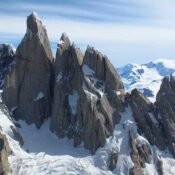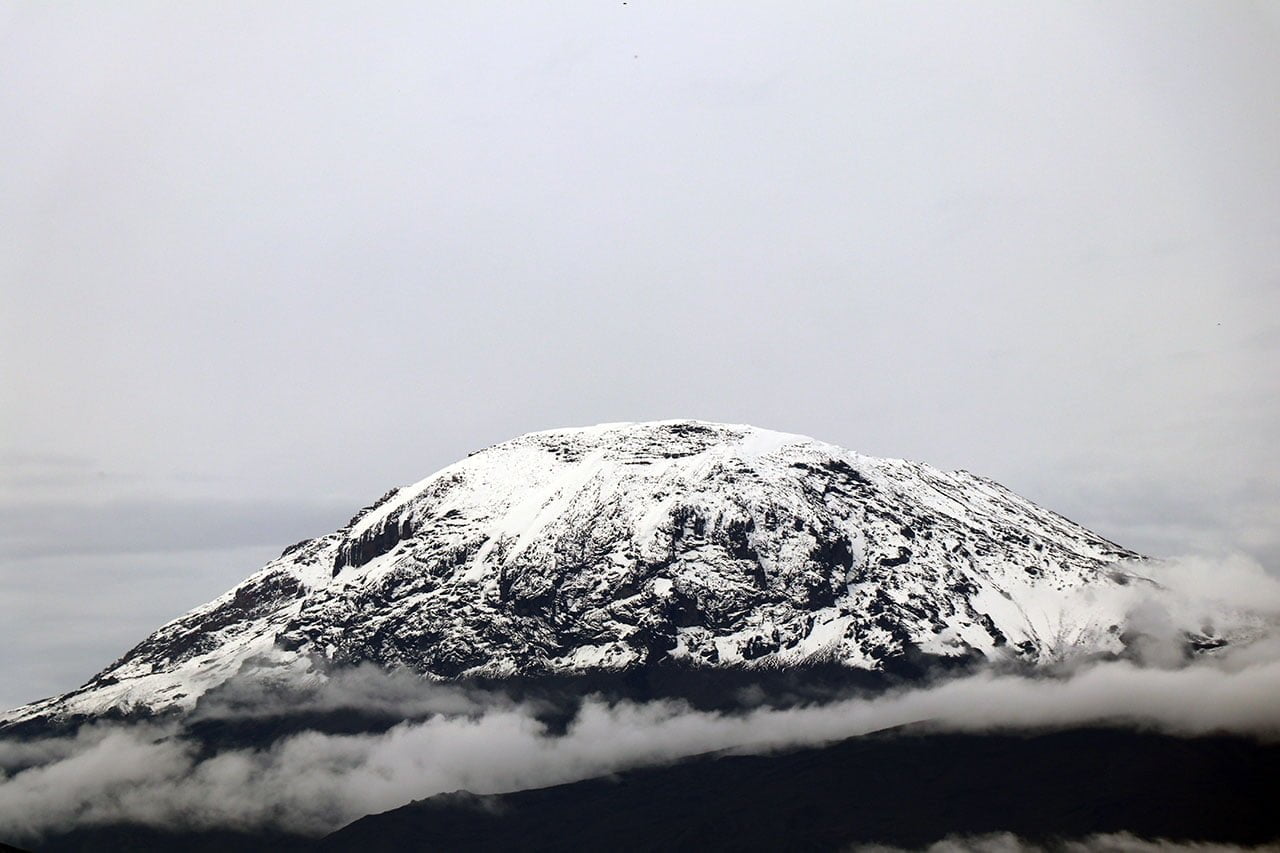Post Single Template
- Home
- Post Single Template
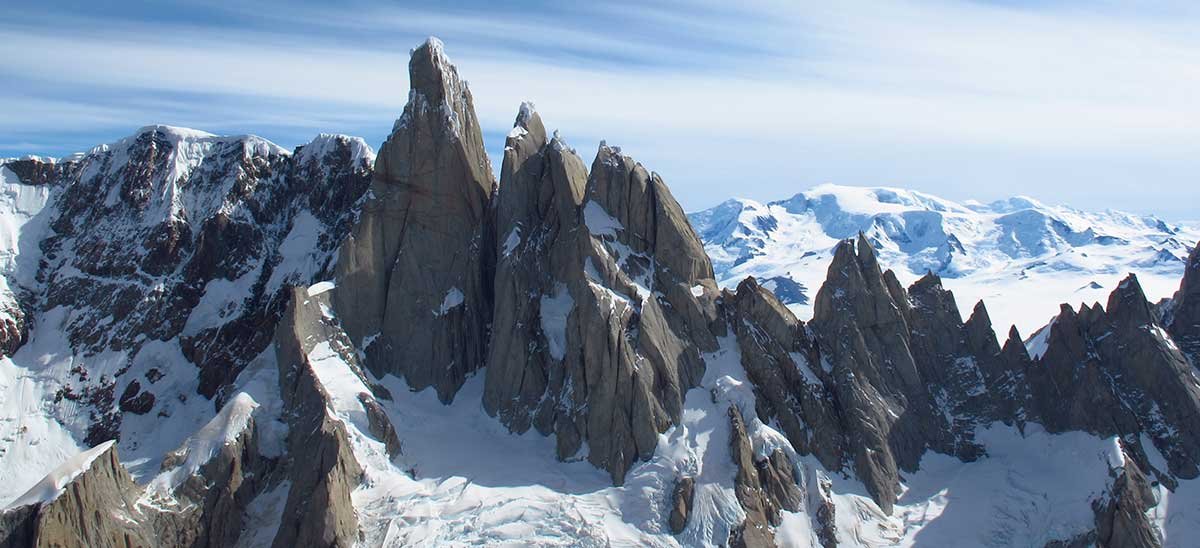
What is the World’s Hardest & Most Dangerous Mountain to Climb? 12 “Killer Mountains” Compete for the Title
KEY FACTS Many adventurers are often curious to learn about what is considered the world’s hardest & most dangerous mountain to climb.
Extremely low oxygen levels are the most challenging ascending circumstances. With temperatures as low as -50°C (-58°F), winds can reach 372 km/h (231 mph). Storms, rockfalls, and avalanches can start at any time. Additionally, hundreds of climbers’ remains have been found in “the death zone” above 8000 meters (more than 26,250 ft). These are not the only things that await those who dare to climb the most lethal mountains.
To compile a list of the world’s most challenging and perilous mountains to climb, the editorial team at Masatu Tours spent weeks gathering data from the world’s most seasoned climbers. They analyzed mortality rates and successful expeditions. They also examined high-altitude environments worldwide. A frequent question is, “What is the World’s Hardest & Most Dangerous Mountain to Climb?”
The tall, snow-capped peaks of the Rocky Mountains, which seem unbreakable, astound visitors. Professional climbers, on the other hand, experience a mixture of fear and excitement. They know that for weeks or even months, they will have to ascend the hill at the limit of human capacity. There is also a significant risk to life. All for a few sought-after minutes at one of the world’s highest and most inhospitable locations. This raises the question of which mountain in the world is the most dangerous and difficult to climb.
Spoiler alert: Mount Everest does not top the list. Although it is the highest mountain, it is by no means the most challenging or hazardous. The odds of reaching the top of Mount Everest are significantly higher than those of some of the other mountains on our list, based on the percentage of fatalities to successful summits. Considering the criteria, what is the World’s Hardest & Most Dangerous Mountain to Climb?
Because there are so many variables and unknowns, it is important to note that there isn’t a single empirical study on this subject, consistent and updated death statistics, or an objective ranking of the “most difficult mountains in the world.” We were forced to rely on the accounts and documentation of specialists, the databases and statistics that were available, the history of ascents, and references to the mountain name in lists that had already been released.
What qualifies a mountain as the most hazardous and difficult to climb?
Numerous factors are linked to this measure. It isn’t always the steepest, highest, or most isolated. Sometimes the opposite is true: higher mortality rates are caused by logistical accessibility, tourist popularity, apparent safety, and ease of ascent. On the other hand, climbing Mount Kilimanjaro (5,895 meters; 19,341 feet) has nearly zero mortality rates and nearly 100% summit success rates, making it one of the “Seven Summits‘” formidable giants.
Weather and natural geography
Unpredictable weather is a feature of coastal mountains and extreme latitudes. A technically simple climb can suddenly become a perilous adventure. This is due to rain, thunderstorms, and storm winds. These are contributing factors in determining what is the World’s Hardest & Most Dangerous Mountain to Climb.
The route that is chosen is also crucial. For instance, there is hardly any sunlight on the north side of the Eiger, but climbers can benefit from warmth and the opportunity to dry their gear and clothing on the notorious Rupal side of Nanga Parbat.
Slope and absolute height
Certain mountain features necessitate strenuous technical climbing at elevated elevations. At low elevations, a large rock wall can be easily managed. However, at elevations of 8,000 meters (26,247 feet), it becomes impossible to overcome.
Another important factor is the slope level. Regardless of elevation, a steep mountain or route greatly lengthens the time required to climb, increases physical exertion, and raises the risk. The final 300 meters (984 feet) before the summit of Everest, known as the “longest mile on Earth,” is a perfect example.
Infrastructure
The complexity of mountain routes requiring advanced technical climbing skills differs significantly from those with a clear, predictable path. For example, climbing Cerro Torre and Baintha Brakk [spoiler alert] requires advanced mixed climbing skills, including aid climbing, big wall climbing, and ice climbing.
Which mountains in the world are the most hazardous and difficult to climb? Our Top 12.
12. Mount Washington
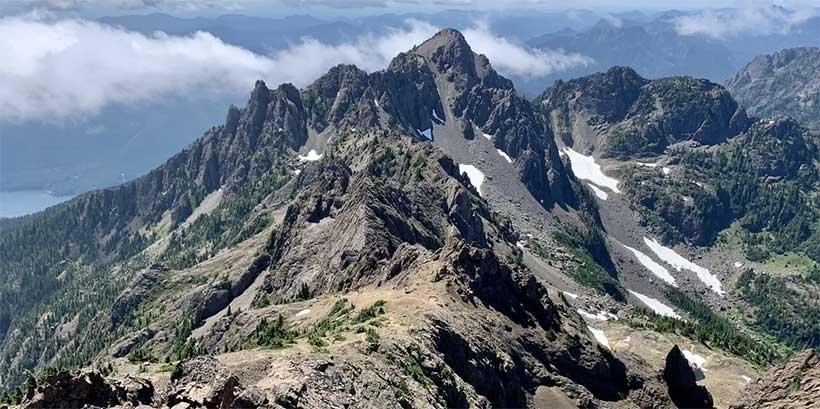
Mount Washington is notoriously accident-prone due to severe weather and careless tourists. Image: mountwashingtonavalanchecenter.org / Charlotte MacDonald.
The fact that a mountain 1,916 meters (6,286 feet) high could rank among the most challenging and hazardous in the world may seem unexpected. However, it can. In comparison to many other, much taller and more formidable peaks, this mountain, which appears to be a large hill at first glance, has claimed more lives.
The United States state of New Hampshire is home to Mount Washington. Since 1849 (the beginning of record-keeping), it has killed more than 150 people. It is known for hurricane-force winds, abrupt weather changes, and summer ice pellets. Deaths frequently result from tourists’ careless behavior and lack of preparation for weather variations. People frequently “don’t understand the difference in weather between Boston and the mountains,” according to Nicholas Howe, author of “Not Without Peril: 150 Years of Misadventure on the Presidential Range of New Hampshire.”
The temperature at the summit can drop to almost -50°C (-58°F). More intriguingly, from 1934 to 1996, it was the world record holder for the fastest wind speed, 372 km/h (231 mph). The Mount Washington Avalanche Center estimates that roughly 25 rescue operations are carried out each year. This is in spite of the fact that visitors can take a cable car to the summit.
11. Cerro Torre
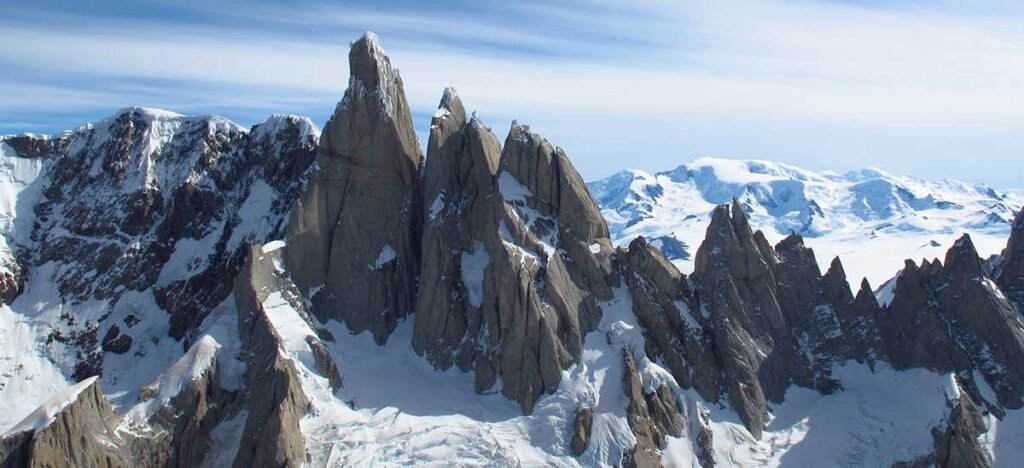
Cerro Torre is one of the world’s most challenging mountains because of its abrupt storms and vertical rocky walls. Image: Pixabay/Jusz Jeziorski
Cerro Torre, Argentina’s comparatively small mountain, is a 3,128-meter (10,262-foot) tower of ice-covered rocks. It is rightfully regarded as one of the most difficult on Earth because of its intimidating architecture.
Ascending Cerro Torre requires climbers to traverse overhanging and vertical sections while alternating between standard rock climbing and ice climbing during a brief window of favorable weather. Strong winds and unexpected storms can linger for several days in Southern Patagonia because of its coastal climate.
Only a few isolated incidents of death have been reported on the mountain. Cerro Torre has no trustworthy statistics. Rather, the mystery surrounding the first ascent to the summit is highlighted.
Cesare Maestri, an Italian climber, claimed to have ascended the mountain successfully in 1959. He claims that his companion, Toni Egger, as well as the camera that captured proof of their successful expedition, fell and perished during the descent. Many did not trust Maestri’s account, and later failed attempts to take Cerro Torre that resulted in additional deaths only served to confirm skepticism. No camera was found with Egger when his body was later found.
Professional climber and mountain guide Rolando Garibotti examined Maestri’s photo from that trip in 2015. According to the Italian, Toni Egger was seen in the picture “climbing the lower slabs of Cerro Torre.” In fact, Garibotti found that the photograph was taken on the other side of the massif. The picture defies Maestri’s earlier reports, even if they were merely looking for a simpler way to reach the summit there. However, discussions on this subject are still going strong today.
10. Baintha Brakk
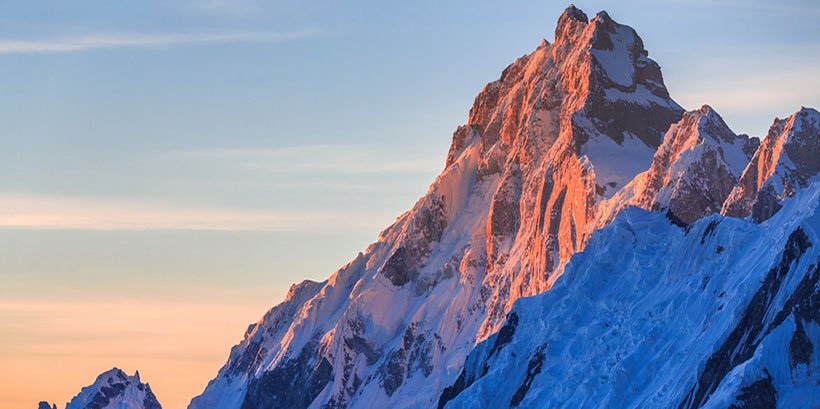
Baintha Brakk has been conquered only three times.
Our focus now turns to Mount Baintha Brakk in Pakistan, which rises to a height of 7,285 meters (23,904 feet). Its ranking among the most challenging and hazardous isn’t supported by the number of fatalities, the accounts of seasoned climbers, or even its menacing moniker “Man-Eater.” The peak has only been climbed three times. It is notorious for its most difficult routes.
In 1971, the first ascent was accomplished. One of the first climbers, Doug Scott, suffered two broken legs on the way back. Meanwhile, his companion, Chris Bonington, suffered pneumonia and two broken ribs. Nevertheless, they survived a severe storm and made it to the base camp.
Only in 2001 were climbers able to replicate their achievements. 2012 saw the third and most recent ascent. Over twenty other expeditions failed. Even the world’s top climbers hold the “Ogre” in high regard, despite its reputation as a place where few people die.
It symbolizes a powerful granite tower with precipitous slopes, difficult climbs, and erratic storms at high elevations. Even the best path is a real struggle for survival.
9. Matterhorn
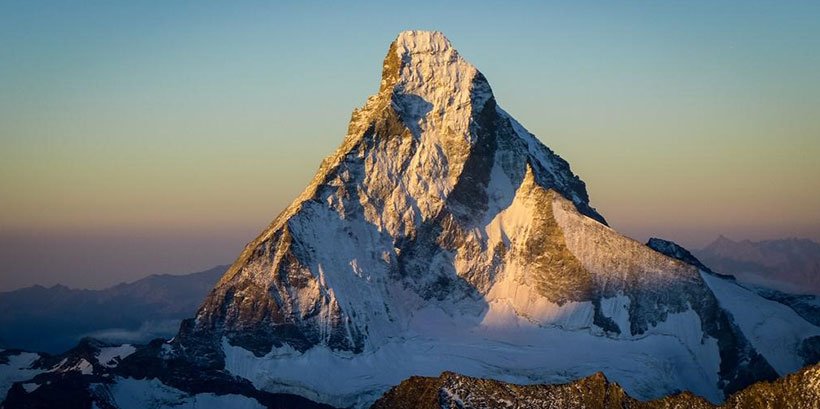
On the Matterhorn, more than 600 fatalities have been documented. Image: Pixabay/Christian Marohn
We now proceed to the base of the most well-known Alpine peak, which stands at 4,478 meters (14,692 feet), on the Swiss-Italian border. The Matterhorn is a remarkable illustration of how easy access to high altitudes and a high concentration of novice climbers can turn a mountain that isn’t the most technically difficult into one of the most dangerous.
This mountain was first climbed in 1865. Since then, climbers have tried to duplicate that victory, resulting in roughly 600 recorded deaths. However, each year thousands of tourists embark on the Matterhorn’s routes. This causes new mishaps due to their negligence.,
Six people die on the mountain every year on average, according to Zermatt, the management of the Swiss tourist resort of the same name. According to other estimates, this number could reach 12. There are roughly 40 rescue operations carried out in the summer. In addition to human factors, the mountain’s danger is explained by storms, avalanches, falling rocks, and fast weather changes.
8. Mount Everest
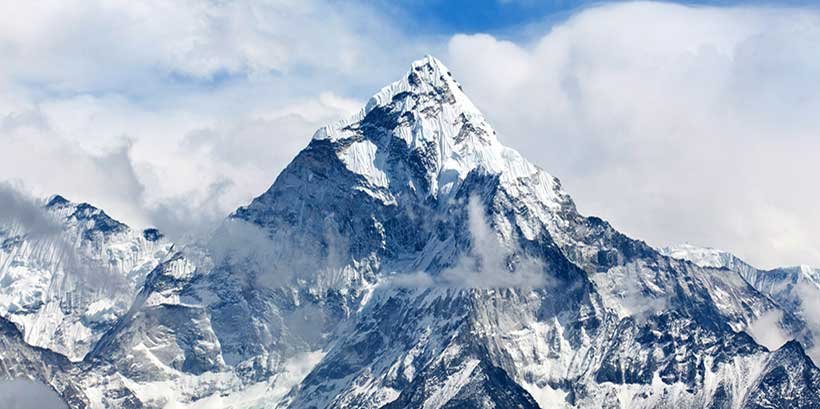
By 2024, more than 6,660 people had reached the summit of Everest. Image: pexels.com/Sulav Loktam
Given its widespread fame, one might think that Everest, sometimes referred to as Sagarmatha, Chomolungma, or the “Roof of the World,” ought to be at the top of the list of the most dangerous and challenging mountains. However, that isn’t totally accurate.
The Himalayan Database reports that the mortality rate of Everest, the highest mountain in the world, varies from 1% to 3.29%. The Himalayan giant, located at 8,848 meters above sea level, experienced a 14.5% mortality rate between 1922 and 1999. By January 2024, 6,664 people had climbed to the summit, and 327 perished on its slopes, according to the database.
The majority of the bodies are still at the top. Retrieval is practically impossible due to the harsh conditions in the so-called “Death Zone,” which begins at 8,000 meters. 8,300 meters (27,231 feet) is regarded as the “point of no return.” Everyone is on their own after this point. In our article “Death Zone: How and Why People Die on Everest,” we described the unsettling tale of this natural cemetery.
59% of deaths on Everest are caused by the height, with 41% being less obvious. Extreme conditions frequently result in respiratory failure, cardiac arrest, frostbite, and altitude sickness. These fatalities’ precise causes and circumstances are yet unknown. With porters and guides striving to maintain safety, the mountain’s distinct character has been lessened by its commercialization. This has led to an increase in climbers and a decrease in the mountain’s distinctive character.
It is still one of the most dangerous and difficult mountains in the world to climb, despite its widespread popularity. Here are some things you should expect if you choose to go on this adventure:
- About two months pass during the expedition. Reaching the base camp at 5,364 meters (17,598 feet) can take up to two weeks, and acclimatization takes a month.
- During the ascent, climbers usually lose 10–15 kg (22–33 lbs);
- Every member of the group needs to be extremely physically and cardiovascularly fit. Long, steep snow and ice slopes that require tremendous endurance are part of the route to the summit;
- Strong winds can cause the air temperature to drop below -60°C (-76°F) at high altitudes, and the oxygen content is only around 30% of normal;
- The final push to the summit, the last 300 meters (984 feet), which is referred to as the “longest mile on Earth,” is the most difficult part. Climbers must traverse a steep, smooth rock face to get past it;
- The expedition can cost anywhere between $40,000 and $90,000.
7. Dhaulagiri
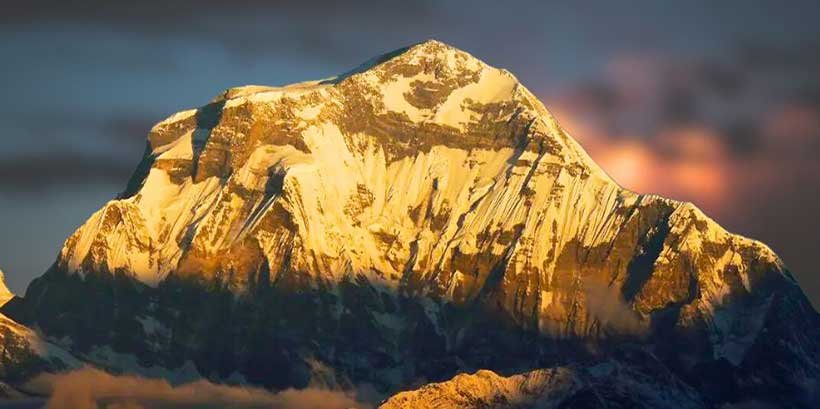
Dhaulagiri’s southern face has never been used by a climber to reach the summit. Image: Pixabay/Nepal Pyramids
At 8,167 meters (26,795 feet), this giant is the seventh-highest peak in the world and is situated in Nepal on the western slope of the notorious Annapurna. Although this mountain is undoubtedly on every professional climber’s “bucket list,” it is still an unreachable goal for the majority.
In 1960, the first successful climb to the summit of Dhaulagiri took place. Over 480 people have since followed the same path and experienced the same success. However, the mountain’s southern face has never been climbed. Here, even the renowned climber Reinhold Messner, the first person to reach the top of Everest without the use of an oxygen cylinder and on his own, failed.
The data is ambiguous when it comes to mountain mortality. There have been reports of roughly 70 fatalities on the mountain, 85 (as of December 2021), and even 140, according to certain sources. In 2021 and 2023, the death-to-success ratio was 21.9% and 13.5%, respectively, according to the Himalayan Database.
As route features, experts specifically point to the steep hills and the abrupt elevation increase to extreme levels. The excursion “program” also carries a significant risk of avalanches and unpredictability in the weather.
6. Kangchenjunga
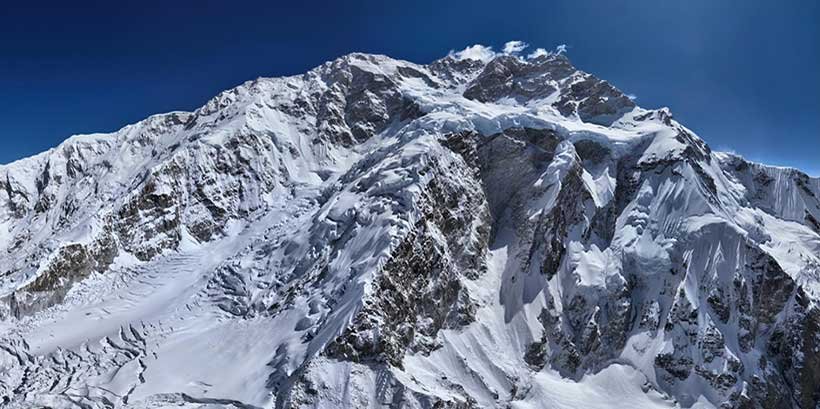
The only mountain where the number of fatal cases does not decline is Kangchenjunga. Image: Pixabay/Labun Hang Limboo
On the border between India and Nepal, we continue our trek over the Himalayas. At 8,568 meters (28,169 feet) above sea level, Kangchenjunga is the third-highest peak in the world. Over 50 people have died there, with mortality rates ranging from 15% to 22%. But because of this double-digit number, this mountain just did not finish on our list.
The number of fatalities on the world’s most hazardous slopes has been declining over time as a result of improved climbers’ professionalism, modern equipment, and a greater understanding of difficult parts. Kangchenjunga is an exception, though.
Five climbers reached the top of Kangchenjunga in 2013 but vanished on the descent, including the well-known Zsolt Eross, who had climbed 10 of the 14 summits over 8,000 meters. They never located their bodies. Nine individuals have died on the peak in the last ten years.
Experts claim that the peak is not the most demanding from a technical climbing standpoint. The altitude and weather are what make the fewer than 300 times peak a perilous place to climb. Kangchenjunga is one of the most hazardous places on Earth because of its very unpredictable weather, frequent avalanches and rockfalls, the possibility of oxygen deprivation at the summit, and the possibility of tripping on a 45–50 degree slope on the way down—the two most prevalent causes of death.
What is the World’s Hardest & Most Dangerous Mountain to Climb?: 5. Mont Blanc
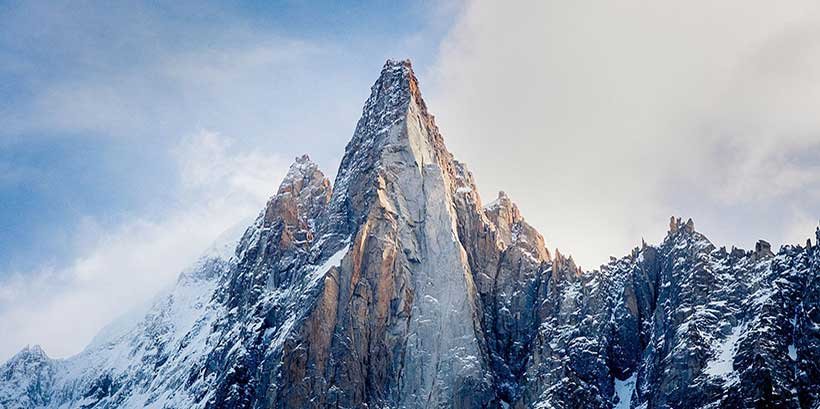
On the slopes of Mont Blanc, thousands of people may have perished. Laurent/Pixabay photo
As Europe’s highest peak, it has a remarkable—and even startling—history of ascents and mishaps. It started in 1786 when Michel Paccard and Jacques Balmat arrived at the 4,808-meter (15,774-foot) peak of Mount Blanc. The modern sport of mountaineering began with this event.
With over 20,000 climbers each year, the mountain on the Italian-French border is currently one of the most frequented in the world. In peak season, up to 300 climbers attempt to reach the summit every day, and rescue personnel perform an average of 12 operations every weekend, making it one of the most dangerous due to its popularity and apparent ease of ascent. Every year, over 100 people die on Mont Blanc as a result of the congested roads and negligence.
According to the 1994 book “The High Mountains of the Alps” by H. Dumler and W. Burkhardt, between 6,000 and 8,000 individuals have perished on Mont Blanc. Including the “eight-thousands,” this is more than on any other peak in the world. This information hasn’t been officially verified, though.
In addition to the vast number of inexperienced and expert climbers, avalanches and rockfalls are another major source of fatalities. Massive slabs of ice with fractures and fissures must be traversed by climbers; they become hazardous when warm weather causes snow slides. The “Couloir of Goûter,” also referred to as the “Corridor of Death,” is another lethal location on the mountain. Climbers are at a significant danger of rockfall on this required portion of the typical climbing route. Every year, about four climbers pass away here.
What is the World’s Hardest & Most Dangerous Mountain to Climb?: 4. Eiger
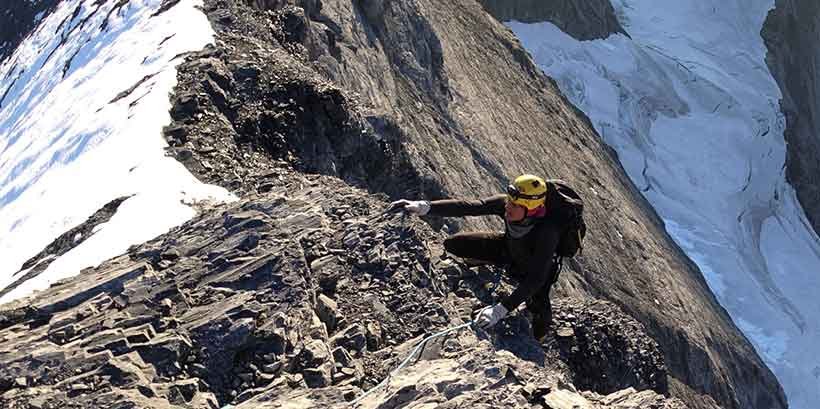
Climbers are familiar with the Eiger because of its North Face, popularly known as the “Murder Wall.” Image: Pixabay/R L
We now go on to Switzerland, where the Eiger dominates the little settlement of Kleine Scheidegg in the Bernese Alps at 3,967 meters (13,015 feet). It is well-known to climbers for its North Face (Nordwand in German), which has earned the moniker Mordwand (“Murder Wall”) because of its sordid past.
Climbers must traverse the North Face, a huge, shattered cliff that is 1,800 meters (5,906 feet) high, in cold weather with quickly shifting weather patterns and a significant risk of falling boulders and ice.
In 1858, Christian Almer, Peter Bohren, and Charles Barrington accomplished the first climb of the Eiger via the safer West Flank. Climbers required a further eight decades to successfully scale the “North Face.” At least 64 climbers have lost their lives while trying to reach the top.
The mountain is still one of the most hazardous even if there have been an increasing number of successful excursions in recent years (about 700 altogether). According to British climber Kenton Cool, who has reached the top of the world’s tallest summits, Nordwand is:
One of Europe's largest Alpine climbs is this peak. Although its north face route is well-known, it is also infamously hazardous. First climbed in 1938, it was one of the last big Alps to be freed. I've climbed it a few times; in ideal weather, it's fantastic, but it has its own weather system and may suddenly turn deadly.What is the World’s Hardest & Most Dangerous Mountain to Climb?: 3. Nanga Parbat
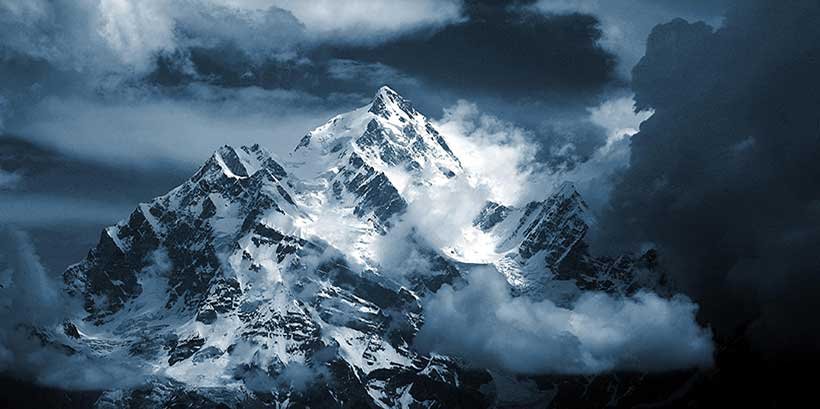
Successful climbs to the top of Nanga Parbat are still extremely uncommon. Image courtesy of Pixabay/Rana Abdul Saeed
Welcome once more to Pakistan, the country that is home to the world’s ninth-highest peak. However, it is not among the most perilous due to its 8,126 meters (26,660 feet). The Rupal face, the world’s tallest rock and ice wall at about 5,000 meters (16,404 feet), is located on the southern side of the narrow ridge that the route to the summit follows. It can test the physical limitations of even the most seasoned climbers. Because of this, Nanga Parbat [also known as “Naked Mountain”) has been dubbed “Man Eater” and “Killer Mountain.”
Hermann Buhl of the German-Austrian expedition accomplished the first climb via a safer route in 1954. At least 31 climbers had died on Nanga Parbat before then.
Only in 1970 was the Rupal face—whose slope ranged from 40 to 90 degrees—conquered. Few have been able to replicate this accomplishment after. Successful summit ascents are still uncommon. Prior to 1990, the mountain’s fatality rate was 77%; it currently ranges between 20.7% and 22%, with over 60 people dying.
The weather is another element that makes the mountain challenging. Lower mountains encircle Nanga Parbat, which is situated in the western Himalayas. It is hence vulnerable to extraordinarily variable weather patterns and gale-force winds.
The peak had long been the scene of the deadliest climbing disaster in history, which claimed ten lives in 1934. Under the direction of Willy Merkl, the team set out on a well-financed trip that had the full backing of the German government. The first person to pass away was climber Alfred Drexel. Later, the group made the decision to withdraw to a safer location when a powerful storm struck the hill. However, exposure, altitude sickness, and weariness claimed the lives of nine people, including Merkl. After a week in the storm and a solo descent of the mountain, only Ang Tsering made it out alive. There are no comparable tragedies in climbing history, according to Joe Simpson’s book “The Beckoning Silence,” due to the length of the agony.”
What is the World’s Hardest & Most Dangerous Mountain to Climb?: 2. K2
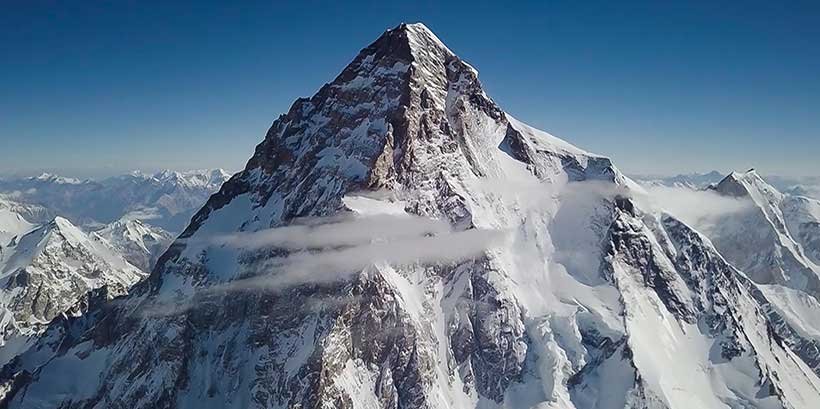
K2 has the second-highest mortality rate (23-25%).
At 8,611 meters (28,251 feet), the second-tallest peak in the world and the planet’s northernmost “eight-thousander” is located on the Pakistan-China border. Although it lacks accurate ascension numbers, this mountain, also known as Karakoram 2, K2, Chogori, and the “Savage Mountain,” is the second deadliest in the world in terms of death, behind Annapurna.
K2 is described by climbers as a massive pyramid made of rock, snow, and ice. Crossing glaciers and scaling sheer rocks in the face of severe cold, wind, snow, and oxygen shortage is the simplest way to reach the top. Some businesses provide combo climbs of K2 and the neighboring, extremely difficult Broad Peak.
The “Bottleneck” is one of the mountain’s most hazardous areas. Climbers have to negotiate an overhanging ice feature here, where erratic ice slabs frequently collapse beside climbers. However, this is the fastest way to the peak, which means less time spent in the “death zone,” which is at elevations of 8,000 meters (26,247 feet), which are too high for the human body.
Kilimanjaro and K2 are sometimes confused, so we’ve produced a blog article to explain the differences: Is Kilimanjaro and K2 the same thing?
Is Everest less deadly than K2?
Yes, without a doubt. With a rate of roughly 23-25%, the majority of analysts place K2 second in terms of mortality among other “eight-thousanders.”
What is the World’s Hardest & Most Dangerous Mountain to Climb?: Which mountain in the world is the most difficult to climb?
Although mountaineers disagree, K2 is frequently mentioned as the world’s most difficult and hazardous mountain to climb.
According to Alan Arnette, who you may know, more than 90 people have lost their lives while trying to ascend Karakoram 2. He says climbing K2 was a really difficult experience for him. He claims that because of the extreme physical strain, climbers feel so hungry and fatigued that they are unable to even eat or sleep.
Additionally, he spoke about the 2024 publication of “Climbing for a Cause: K2 with a Purpose.” The documentary “K2-The Most Dangerous Mountain in the World” is one of the movies we suggest. It shows famous climbers Carla Perez, Adrian Ballinger, and Eddie Bauer, as well as photographer Esteban Mena, trying to reach the top of the peak without the use of oxygen. A few details from the movie:
- The number of space travelers surpasses the number of K2 summit visitors.
- One person perished for every four who made it to the peak and survived.
August 2008 was the deadliest period in the mountain’s history. Three climbers were hurt and eleven climbers from other parties perished on the slope. It is still unclear what exactly caused the avalanche and the string of deadly incidents.
1. Annapurna
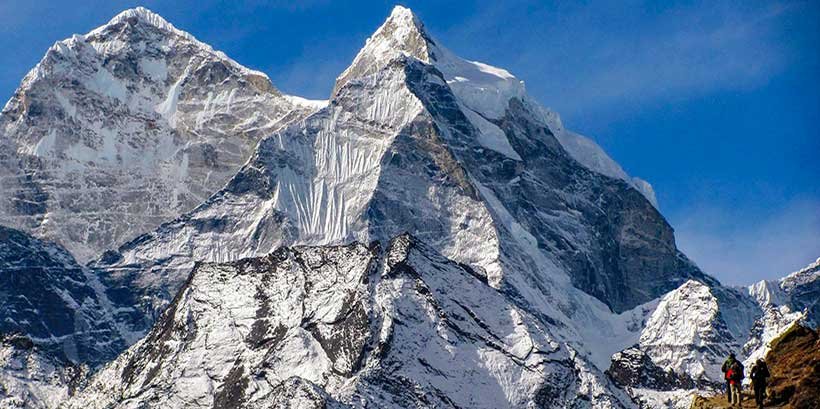
Annapurna is considered the most difficult and dangerous mountain to climb on the planet. Photo: pexels.com / Yohantha Gunawarna
We are now heading back to Nepal to confront yet another “killer mountain” that is at the top of our list.
What is the World’s Hardest & Most Dangerous Mountain to Climb?: What is the world’s most hazardous peak to climb, then?
Because of its terrible climber death rate, Annapurna is the most dangerous peak in the world to climb.
The tenth-highest peak in the world, Annapurna (8,091 meters; 26,545 feet), has arguably the most sinister ascension history, the biggest death toll, and numerous warnings to novice climbers not to try to reach the top. Let’s begin at the very beginning.
- 191 climbers have reached the summit of the mountain as of 2012, and at least 61 people have died—52 on the ascent and 9 during the descent.
- 43 people were killed in avalanches caused by a snowfall that hit Annapurna and the surrounding area in 2014. At least 72 people died on the mountain, according to later accounts, though it’s unclear how many were on the slope at the time.
- The death rate was 27.2% as of May 2023. Among other “eight-thousanders,” the mountain is the highest on this metric.
Only a few hundred people have ever reached the peak of Annapurna, but over 6,000 people have climbed the 800-meter (2,625-foot) Everest. Only the top climbers in the world can handle its climbs. As a result, businesses that plan private adventures all over the world advise adventurers to restrict their travel to the Khopra Ridge area and only visit teahouses in the “Annapurna” part of their websites.
What is the World’s Hardest & Most Dangerous Mountain to Climb?: What makes the Annapurna such a threat?
Why is Annapurna such a threat? Nearly anything. Steep rocky areas, erratic weather, severe storm risk, avalanches, and low temperatures at altitude make it all but impossible. Another factor is how far away the mountain is from populous areas. Receiving immediate aid or getting to a safe location in an emergency is not feasible. It would be a mistake to undervalue this mountain.

